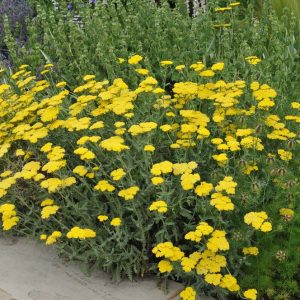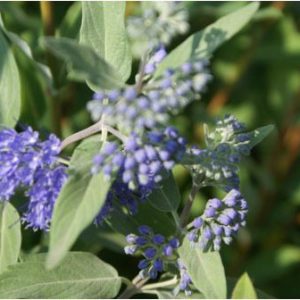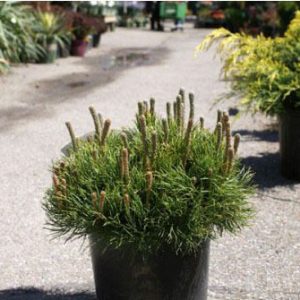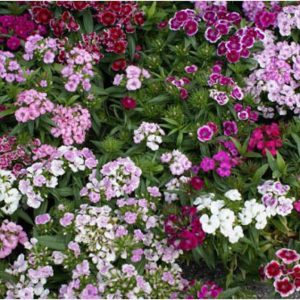Description
Buxus – Box – Boxwood –
There area bout 70 species of traditional evergreen shrubs and trees, in this genus. They occur in habitats ranging from rocky hills to woodland in Europe, Asia, Africa, Central America and the West Indies. The leaves vary in size are opposite, linear-lance shaped to almost rounded, smooth edged, and leathery. In spring, small, axillary tight clusters of star shaped, yellow-green flowers of both sexes are borne on the same plant, several male flowers, with conspicuous yellow anthers, surround on female, the flowers attract bees. Boxwoods are grown mainly for their neat, dense, long lived growth habit and foliage, which can be variegated, and their ability to withstand clipping, which makes them ideal for hedging, mazes and topiary. Fruits are small capsules with 2 little ‘Horns’ at the apex of each of the 3 segments, which split apart explosively to expel their seeds. Use dwarf boxwoods for edging, as a groundcover, or in a rock garden. Contact with sap may irritate skin and occasionally kill livestock. Timber is famed for their close grained, yellowish wood,, used for carving and engraving.
Grow in any fertile, well drained soil, preferably in partial shade. They are tolerant of sun, but the combination of full sun and dry soil may encourage poor, dull foliage color or scorching. Prune in late spring.
Prone to powdery mildew, pythimum root rot, canker, dieback, leaf spots, leaf miners, scale insects, lesion nematodes, caterpillars, psyllids, and mites.
B. microphylla ‘Green Velvet’ – Small-leaved Boxwood – Chinese Box – Japanese Box – Korean Box – This slow growing, dense and compact, rounded shrub from Eastern Asia grows 30″ tall and 5′ feet wide.It produces elliptic-oblong to inversely lance shaped, dark green leaves, to 3/4″ long, turning pale amber in winter.Flowers are greenish yellow borne in spring in profuse clusters.
Zones 6-10





